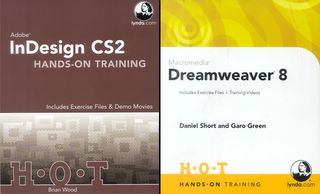
National Book Award winner Barry Lopez to speak at Chico State University tonight
By DAN BARNETT
Chico will be graced with a visit by nature writer Barry Lopez at 7:30 p.m. today at Chico State University's Laxson Auditorium. Advance tickets are $15 for adults, $7 for students from the University Box Office, 898-6333. Sponsored by Chico Performances and the university's Office of the Provost, Lopez's appearance is part of the new "On the Creek" lecture series which, according to a news release, "will present authors and lectures whose focus promotes and explores environmental and sustainability issues that affect the world today."
One of the best nature writers in the country, Lopez has published the best-selling nonfiction work "Of Wolves and Men" and has also written "nine works of fiction and several collections of essays, and has been honored with a John Hay Medal, a Guggenheim Fellowship, a National Science Foundation Fellowship and by the American Academy of Arts and Letters." Not a bad résumé!
But perhaps the book that most captured public attention is his "Arctic Dreams: Imagination and Desire In a Northern Landscape" ($15 in paperback from Vintage), first published in 1986. A winner of the National Book Award, "Arctic Dreams" exemplifies Lopez's concern with the interaction of human culture and the land. His is not a simplistic vision; in the epilogue he contrasts his own heritage with that of the Eskimo (adopting the standard term for a number of distinct peoples):
"One of our long-lived cultural differences with the Eskimo has been over whether to accept the land as it is or to exert the will to change it into something else. The great task of life for the traditional Eskimo is still to achieve congruence with a reality that is already given. The given reality, the real landscape, is 'horror within magnificence, absurdity within intelligibility, suffering within joy,' in the words of Albert Schweitzer. We do not esteem as highly these lessons in paradox. We hold in higher regard the land's tractability, its alterability. We believe the conditions of the Earth can be changed to ensure human happiness, to provide jobs and to create material wealth and ease. Each culture, then, finds a different sort of apotheosis, of epiphany and comfort in the land."
He adds that "No culture has yet solved the dilemma (of) ... how to live a moral and compassionate existence when one is fully aware of the blood, the horror inherent in all life, when one finds darkness not only in one's own culture but within oneself. ... There are simply no answers to some of the great pressing questions."
Lopez spent almost half a decade in the Arctic region researching his book, which includes chapters on musk oxen, polar bears, narwhals, the migration of birds and mammals, the history of human encounters with Arctic ice, the ever-changing Arctic landscape itself. "When you have walked for days under the enormous sky; when you have felt the remoteness of the world from the Thomsen river country of Banks Island; felt the unquenchable exuberance of sled dogs cracking off the frozen miles down a river valley; or been shown how some very small thing, like a Lapland longspur eating the lemming's bones for calcium, keeps the country alive, you begin to sense the timeless, unsummarized dimensions of a deeper landscape."
Later in the book Lopez writes the history of the European exploration of the "northern passage" and says that "They thought of the Arctic as fixed in time -- a primitive landscape, a painting, inhabited by an attenuated people." The reality is far otherwise.
People have had many (incompatible) dreams of what the Arctic might be, given their view of what it is and has been about. With a trained eye Lopez notes how industrialization is changing the face of the north but at the same time recognizes Eskimo hunting practices are not without violence. He is a careful and sensitive guide.
The book begins and ends with the author bowing to the natural world, giving it due regard. "This is a land," he writes, "where airplanes track icebergs the size of Cleveland and polar bears fly down out of the stars. It is a region, like the desert, rich with metaphor, with adumbration. In a simple bow from the waist before the nest of the horned lark, you are able to stake your life, again, in what you dream."
Dan Barnett teaches philosophy at Butte College. To submit review copies of published books, please send e-mail to dbarnett@maxinet.com. Copyright 2006 Chico Enterprise-Record. Used by permission.



